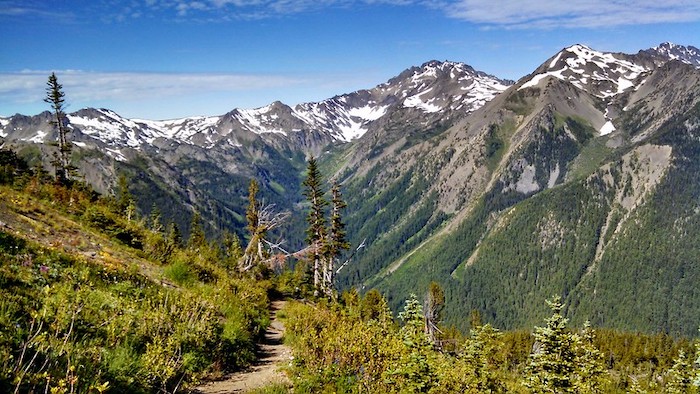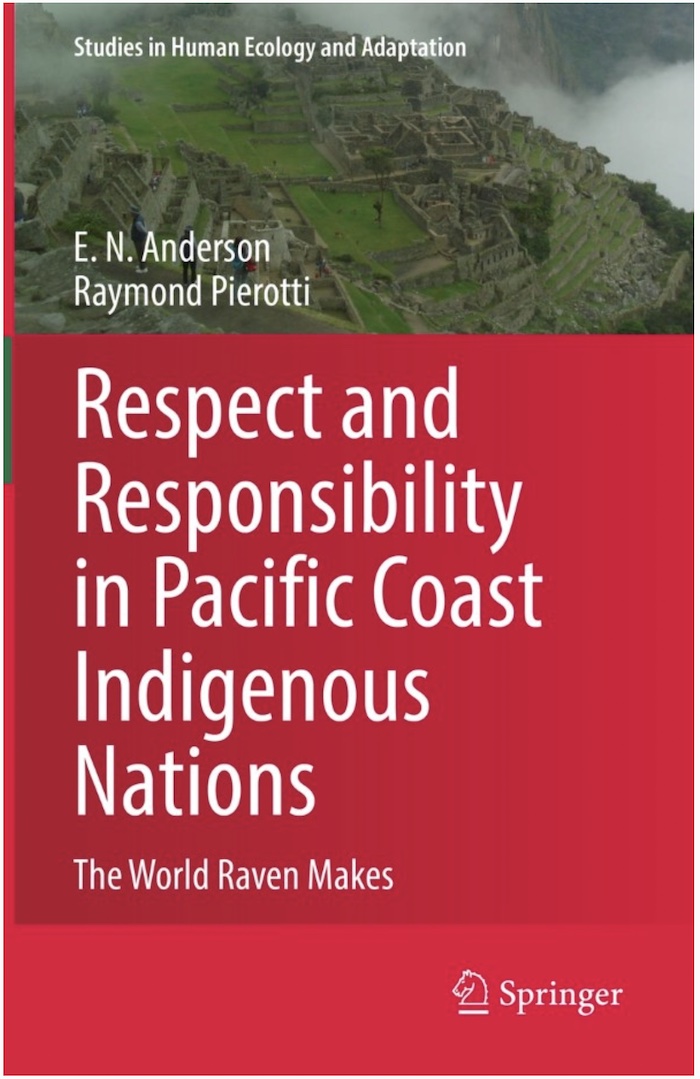Book details how Native Americans of the Pacific Coast sustainably managed resources

LAWRENCE — For at least 10,000 years before contact with European settlers, Native American societies from Alaska to California conserved and interacted with natural resources using a more sustainable and spiritual approach than anything seen in the modern industrial world.

A new book, “Respect and Responsibility in Pacific Coast Indigenous Nations: The World Raven Makes” (Springer, 2022), co-written by an evolutionary ecologist at the University of Kansas, explores key philosophies and practices that guided how these significant civilizations in the Pacific Northwest related to their environment.
“One of the things that governs their thinking that we think is necessary for the contemporary world is that people have to show respect and responsibility towards one another and the natural world as a way of trying to guarantee our survival to the future,” said Raymond Pierotti, associate professor of ecology & evolutionary biology at KU.
The book was co-written with Eugene Anderson, professor emeritus of anthropology and a prominent ethnobiologist at the University of California, Riverside.
“The audience we wrote it for is the Native peoples of the Pacific Northwest,” Pierotti said. “Gene Anderson, my co-author, has worked with them for years on their societies, cultures and knowledge systems. He’s an anthropologist by training, but he's also very understanding of ecology and the way that it functions. Gene brought me in because he thought my experience working on Indigenous peoples' knowledge and relationships with nature would enhance the overall power and impact of the book.”
Examining how Native American cultural groups found balance with nature, the authors in part curated a collection of Native American testimony — including myths, stories and speeches that signify an ecological viewpoint. This is important, Pierotti noted, because the government of Canada now recognizes Indigenous accounts as equivalent to Western traditions of evidence in court cases concerning land claims and decisions about land management.
“In most Native American traditions, what are called religious or ceremonial aspects involve trying to reconcile a way of life that requires the taking of other lives with this idea that you will acknowledge and respect your responsibility to those other lives,” he said.
Chapters cover many facets of Native American life in the Pacific Northwest —including teachings, stories, visual arts, ideology, spirituality, resource management, social and cultural dynamics, and economics — as these societies gathered resources from the land and sea. The authors give added focus to two Indigenous societies noted for their longevity, wealth, and political and economic power: the Nuu-chah-nulth (or, Nootka) of Canada and the Makah, who currently reside on Washington state’s Olympic Peninsula.
The book’s opening chapter explores the rules and principles used by Native Americans to avoid the “tragedy of the commons” — the idea that it’s impossible for humans to share mutual resources.
“These people worked very hard to avoid having a tragedy of the commons,” Pierotti said. “There are two tendencies with the perception of Native people. One is to regard them as primitive; the other is to regard them as saintly. These people were neither. In fact, they were serious rivals and had a lot of conflict with one another — but underpinning their combat was the idea that you could not destroy. They never did try to burn out each other's settlements, for example, because what they wanted to do is reinforce their influence over the areas which they used, including the waters surrounding these lands, because to them the sea was part of their country.”
Another chapter contrasts Native American ecological practices and ideologies with the mindset of European settlers who came to the region beginning in the 1700s, first as trading partners and increasingly as settlers.
“These were very much maritime cultures,” Pierotti said. “These people lived by whaling and fishing most of the time and were supplying American settlements like Seattle and Victoria, British Columbia, with whale oil for fuel and fish for food. As major trading partners with the colonial arrivals, they were extremely wealthy until disease, and after the War of 1812, the U.S. paid more attention to the Pacific Coast and moving more military and settlers in — and the British took over after the Spanish departed for California.”
Pierotti said Indigenous Nations of the Pacific Northwest (First Nations in Canada) were successful at resisting British invasion for many years. “The British got established in Vancouver and Victoria before the Nations realized that they were planning on being there permanently,” he said. “They originally thought of them as trading partners, and they set up their relationships accordingly. When they realized, ‘Oh, these people are planning to stay,’ other issues came into play.”
Eventually, Pierotti said, Indigenous populations lost about 95% of their population between 1700 and 1900 to disease.
With humanity facing the climate crisis, the authors said there are important lessons for living more sustainably to be found in the ideologies and practices of Indigenous peoples of the Pacific Coast — who themselves were challenged by changing climate for millennia from their arrival during the Ice Age around 15,000 years ago until the present.
“We're looking at some very ancient cultures here — the way they set themselves up to live was a way of using the environment to help them survive but not ever destroying it in any meaningful way,” Pierotti said.
Even more important, they knew when to stop exploiting resources, according to the KU researcher.
“As an example, the Makah decided to stop taking gray whales, because they realized the species was in trouble in the early 20th century, whereas it took more than 60 years for the U.S. to declare gray whales an endangered species,” Pierotti said.
Top photo: Snow-topped mountains. Credit: U.S. Forest Service
Right photo: A new book, “Respect and Responsibility in Pacific Coast Indigenous Nations; The World Raven Makes” (Springer, 2022), coauthored by an evolutionary ecologist at the University of Kansas, explores key philosophies and practices that guided how these significant civilizations in the Pacific Northwest related to their environment.